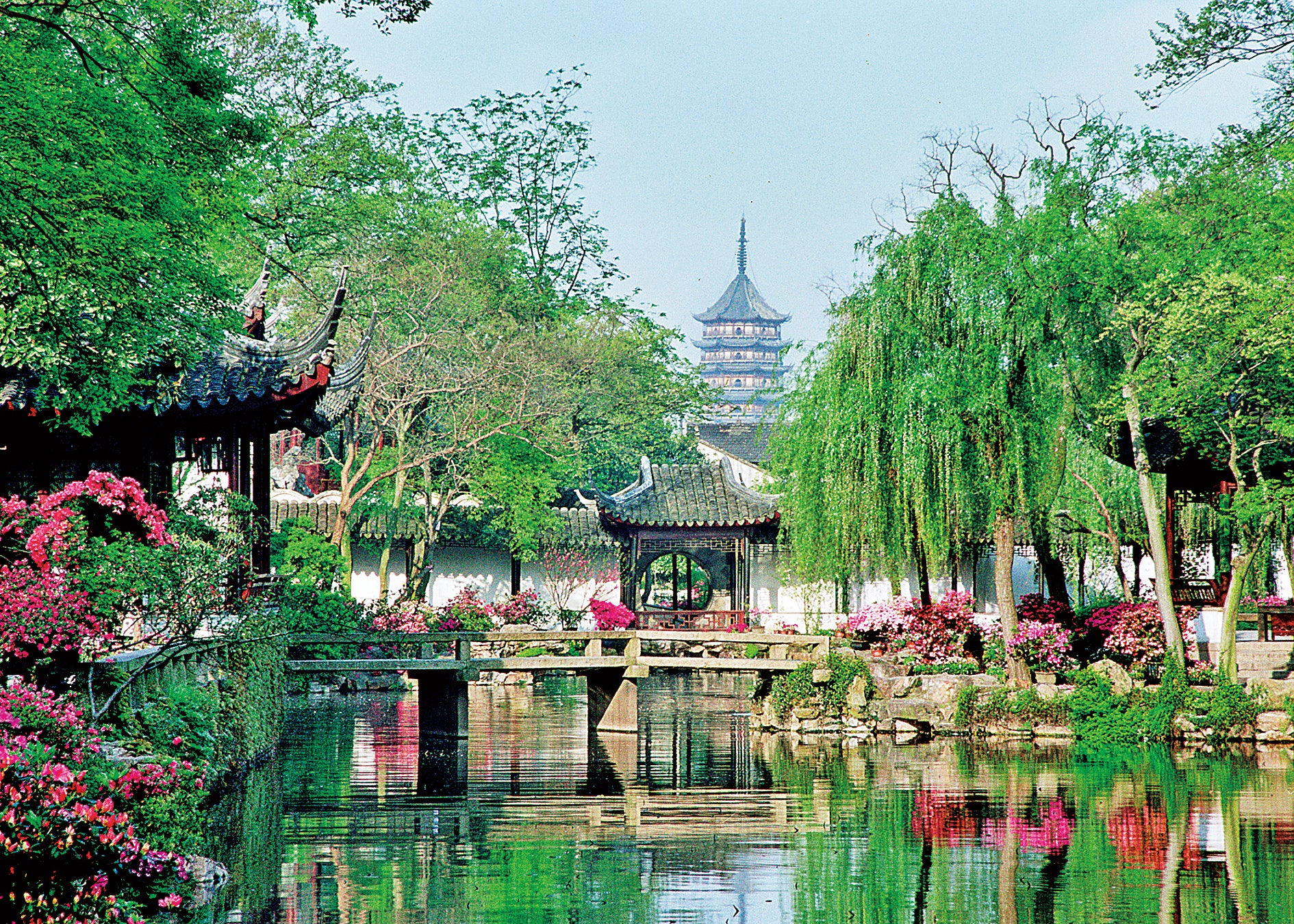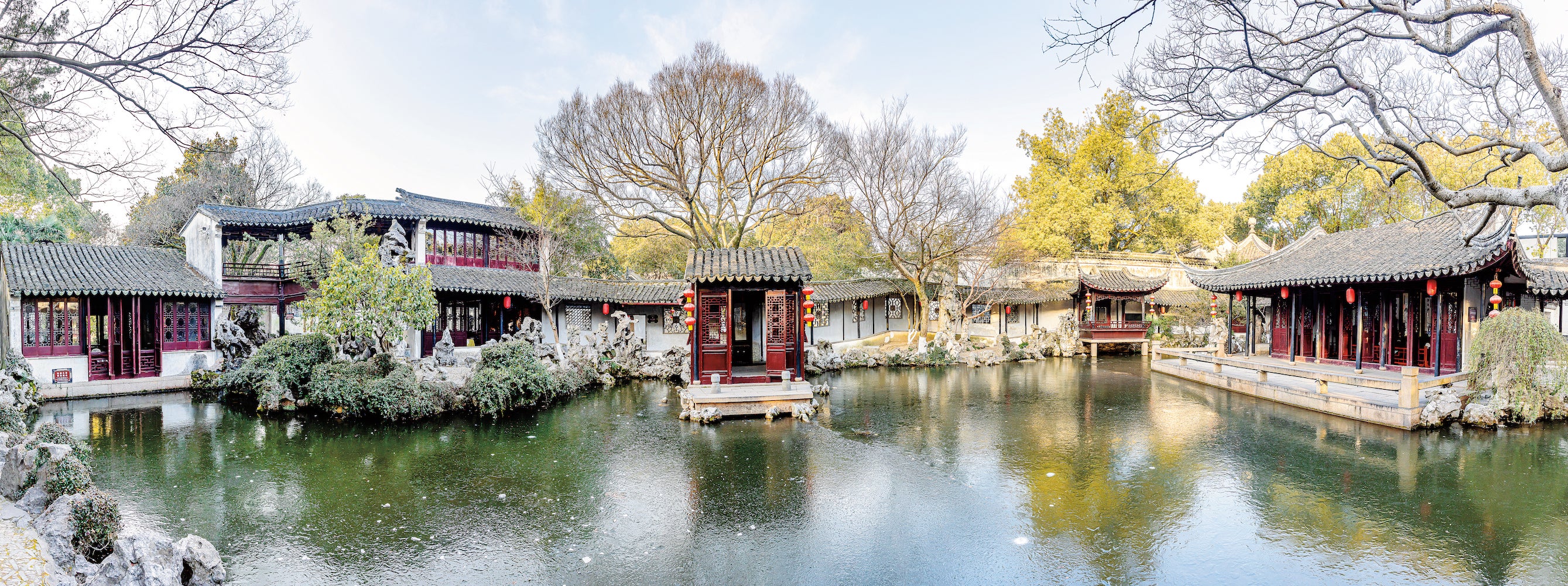Where heritage takes root
THE ARTICLES ON THESE PAGES ARE PRODUCED BY CHINA DAILY, WHICH TAKES SOLE RESPONSIBILITY FOR THE CONTENTS

Shortly after dawn, the 680-year-old Lion Grove Garden wakes up to the sound of chirping birds and its moist air is suffused with a floral scent. Mist has not evaporated. With a view of pavilions and rockeries and a sip of green tea, early visitors to this garden in downtown Suzhou, Jiangsu province, can feel a sense of Zen-like inner peace.
When a group of monks during the Yuan Dynasty (1271-1368) first built this garden, they may have just wanted to enjoy a quiet retreat, tucked away from urban noise. Nonetheless, in the following centuries, this enchanting garden, most notable for its waterside rockeries resembling the shape of lions, has attracted a constant stream of celebrity guests, who have left a long list of poems, paintings and historical anecdotes.
The temple has disappeared in the mists of time, but the Lion Grove Garden is still a must-visit attraction for visitors to Suzhou.
While they will be admiring the same view as their ancient predecessors, against the louder backdrop of the modern world they may need to work harder to attain a sense of tranquillity.

“In recent years we’ve tried to restore the historical landscapes of Suzhou’s classical gardens, but an exquisite garden cannot be an empty shell,” says Bai Lingzhi, deputy director of the planning department of Suzhou Administrative Bureau of Garden and Landscaping.
“We need more creative ideas to usher people into the lifestyle espoused by the gardens and thus promote their aesthetic value in the modern era.”
Consequently, a programme was set up last year allowing tourists in small groups to reserve places to enter the garden in the early morning before regular opening time. Their visit ends as they complete the last step in making a traditional folding fan, adding a poem about the garden on its surface. It is a poetic way to reminisce about the golden age of Suzhou’s classical gardens.
“The experience can help us understand the wisdom, refined taste and philosophical world view of the ancient Chinese literati,” Bai says.
Not every architectural landmark is grand in scale, with splendid decorations, or dazzling colours. In fact Suzhou gardens may just be the opposite.
In 1997 and 2000 nine of the best-known classical gardens of Suzhou, including Lion Grove Garden, Humble Administrator’s Garden and Great Wave Pavilion, were put on the World Heritage List. As UNESCO remarks: “Classical Chinese garden design, which seeks to re-create natural landscapes in miniature, is nowhere better illustrated than in the nine gardens. … The gardens reflect the profound metaphysical importance of natural beauty in Chinese culture.”
Great Wave Pavilion, the oldest extant garden in Suzhou, was first built in the 11th century, though the earliest private garden in the city appeared in historical documentation in the fourth century, says Cao Guangshu, director of Suzhou Administrative Bureau of Garden and Landscaping.
A comprehensive survey from 2015 to 2018 showed that the city is home to 108 classical gardens, 57 of which are in the historical neighbourhood of Gusu district.
“Suzhou gardens reveal people’s adoration of nature by mixing elements of different natural landscapes into their designs,” says He Fengchun, director of the Suzhou Institute of Landscape Architecture Design and a veteran in the conservation of the gardens. “They inspire us to pursue harmony with the world around us.”
Regardless of whether those classical gardens in Suzhou were once owned by high officials or nobles, literati or artists, as well as business tycoons, their days as residences have long gone. Nonetheless, these “pearls scattered on a piece of jadeite”, as He describes the city’s gardens, have lasting legacies, guiding people how to live.
Previously published on Chinadaily.com.cn
